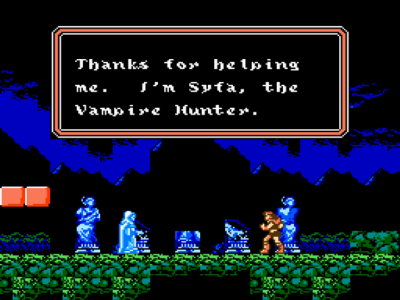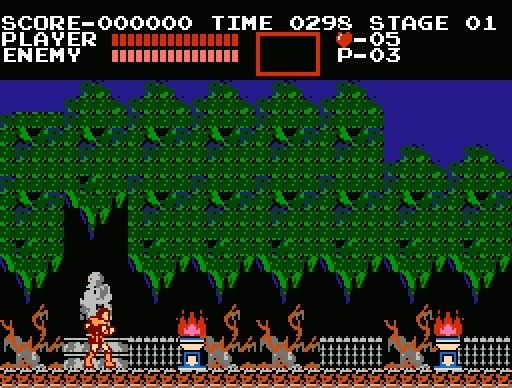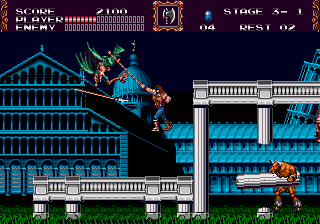Castlevania is a platforming action-adventure video game series created by Konami. The series centers around fighting vampires and the undead, with characters such as 'Golem' and 'Death' often appearing in games. The games' antagonists are a family called the Belmonts, who are at war with Count Dracula who is resurrected almost every 100 years. Dracula is the main villain and often the final boss in the games.
Castlevania - The original Castlevania was launched in 1986 on the Nintendo Entertainment System (NES). The protagonist, one of the Belmont family members called Simon, uses a whip called "Vampire Killer" to fight through a castle filled with enemies to confront and defeat Dracula.
Castlevania II: Simon's Quest - The sequel to Castlevania came a year later in 1987. It introduces non-linear open ended gameplay to the series, with new elements such as a world map that players could explore at will. It also introduced some RPG elements such as weapon upgrades. One of the most interesting new features was it's persistent world, and day-night cycle. The game had three different endings depending on how long the player took to complete the game.
Castlevania III: Dracula's Curse - The third main entry in the series was released in 1989. It was more like the original game than it's predecessor, but had new features such as branching paths, multiple characters, and alternate endings depending on player choices.
Super Castlevania IV - Essentially a remake of the original game for the newly released SNES, this game came out in 1991 with 16 bit graphics and an expanded control scheme. Although the level designs were different, the game itself followed the same plot and premise as the original.
Castlevania: Bloodlines - The only game in the series to be released on the Sega Genesis in 1994. The game doesn't feature a member of the Belmont family but has two different playable characters. The game was noteworthy for its special effects, with swaying towers, large bosses and water reflections.
Castlevania: Symphony of the Night - The first entry on the Playstation, released in 1997. It made a major change to the basic mechanics of the game, with the level-by-level platforming of previous games replaces with a wide-open level design and a massive game world. To stop the player from being able to access all areas of the game at the start, certain areas are only accessible once the player gains the ability to shape-shift.
Castlevania - Released in 1999 on the Nintendo 64, it was the first 3D game in the series. The players could choose between two characters to play as at the start of the game, and once again had to defeat Dracula. Due to the new 3D aspect of the game, the gameplay featured a basic target and lock-on system
Castlevania: Legacy of Darkness - Released in the same year, it was a direct sequel to the first N64 game but also included the original remastered.
Castlevania: Lament of Innocence - The first installment to be released on the Playstation 2,and the third 3D game of the series, the game was released in 2003. The game featured Hack 'n Slash gameplay similar to the 2001 release Devil May Cry. It was another open-ended game, featuring a room with five portals that connected to the main areas of the game. It was critically well recieved.
Castlevania: Judgment - Judgment was the first game in the series to move from the platforming genre to the fighting genre. The first title from the series on the Wii, the game features similar gameplay to that of the Tekken series, with players using the Wii's motion controls to attack. The game features a number of different characters from the series that are playable with some new additions.
Castlevania: Lords of Shadow - Another game that radically changed the direction of the series, it was a reboot of the franchise and most recent title, released in 2010 on the next generation Xbox 360 and Playstation 3. Much like past installments, the game still had a heavy focus on platforming and puzzles, but it also heavily focused on action gameplay. The player could unlock perform different attack combos with the main weapon. The game also features large scale bosses which the player can grapple onto using the main weapon.





.JPG)




















